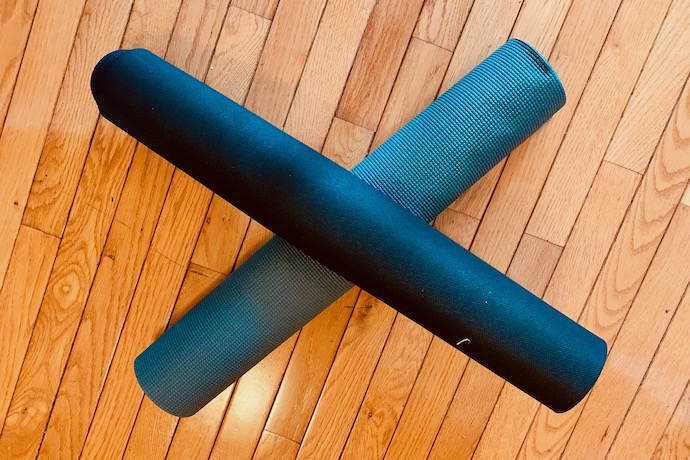The headline itself was the stuff of viral internet fodder: Alabama House votes to end yoga ban, but don’t say ‘namaste’.
The news that Alabama’s House of Representatives voted to overturn a quarter-century ban on practicing yoga in public schools made its brief rounds on Twitter, with many offering their own pithy quips on the issue, and importantly, pushing back on what is yet another example of the whitewashing of yoga. It was a story that, under normal circumstances, I would raise my eyebrows at but otherwise ignore.
But this story speaks to something larger than a ban on yoga. It’s a manifestation of how the agenda of the religious right works, and their weaponization of religious freedom—perhaps our most foundational freedom—in service of a conservative Christian agenda.
In 1993, the state’s Board of Education voted to prohibit yoga, hypnosis and meditation in public schools, stemming from conservative pressure. The current bill, which is now moving to the state’s Senate, would allow the practice of yoga in classes, but still forbid chanting, mantras, and the use of “namaste,” a Sanskrit salutation.
To an extent, I agree with the latter part of the bill. In Engel v. Vitale, the Supreme Court ruled that prayer cannot be administered in public schools, regardless of the denomination, and even if participation was not required. As public schools are an arm of the state, the promotion of even nondenominational prayer is a clear violation of the Establishment Clause. I, therefore, support prohibitions on school-sanctioned chanting of the sacred mantras that I myself grew up learning, just as I support bans on school-sanctioned recitation of Biblical scripture. Maintaining a healthy wall of separation between church and state protects our democratic freedoms and religion itself.
Unfortunately, the conservatives rallying against the teaching of yoga—with or without mantras—in public schools are not doing so out of allegiance to our nation’s wall of separation. Their attack on yoga has nothing to do with the constitution, and everything to do with its Hindu roots.
As one legal adviser for the Alabama Citizens Action Program (ALCAP)—a Christian organization with the mission to push a Biblical standard of ethics within the state—told The New York Times, “Yoga is ‘a very important part of the Hindu religion… As such, it does not need to be taught to small children in public schools.’” And yet, on its website, the organization includes in its mission statement: “An ethical, moral and responsible lifestyle based on biblical standards is an attainable goal that will benefit the entire state.”
There are several issues here to unpack. Undoubtedly, Hinduism is at the historical crux of yogic practice. At the same time, yoga has become a global phenomenon that in many ways transcends religion and nationality. Though I broadly agree with the bill moving through Alabama’s legislature, I find it tremendously disappointing that students are even being denied instruction on the roots of yoga, which differs significantly from a religious endorsement. As critics have pointed out, the denial of this educational opportunity is in many ways a vestige of colonialism.
But these points, at least, can be debated in good faith. Here on RD, for instance, Dr. Candy Gunther Brown wrote on whether Hinduism is inextricable with yoga. While I believe it can be practiced on a secular level, with an instructive—not coercive—education on its roots, there is a critical conversation to be had to ensure the wall of separation is applied equally. But that’s the operative term here: equally.
This brings me to the largest hypocrisy revealed in this proxy war for the religious right—for many, this is not about religious freedom, it’s about stifling non-Christian beliefs while seeing public education as a vehicle for pushing biblical morality.
Though ALCAP’s adviser says that their opposition to yoga being taught in schools is that religious activities should not be taught in elementary schools, the group’s real fear is that the children will be influenced by a religion such as Hinduism. As he told The Washington Post:
“Children at that age are very tech-savvy, and if they are taught yoga, all they have to do is Google it, and they will immediately find information on the spiritual aspects of it and look at it,” he said. “And if they look at it, it might lead them to believe that’s something they should be involved in.”
By no means are members of the religious right opposed to religion in their classrooms—for them, it’s just a matter of it being the correct religion. Earlier this month, Alabama’s Republican Senator Tommy Tuberville in fact took to the Senate floor advocating for the reinstatement of prayer and God in public schools. Tuberville—much like organizations such as ALCAP—views secularism, pluralism, and diversity as agents of deterioration in public schools. In reality, public schools, particularly those in low-income, BIPOC communities, are actually suffering due to a lack of funding—funding that religious conservatives are also trying to funnel into religious, private institutions.
Religious conservatives are more than eager to teach the Bible in public schools using public funds. But the moment people from different backgrounds have the temerity to educate others about their culture—not endorse, but educate—this same constituency is suddenly concerned about church-state separation, driven by the fear that impressionable children may learn more about the world’s third-largest religion.
In a rapidly globalizing world, our students do not benefit when we make their worldview smaller. Of course, regardless of the religion, we must maintain the sacred wall of separation between church and state. But those who support true religious freedom must also reject its weaponization by advocates who seek to make our public schools a vehicle for an extreme Christian agenda.


